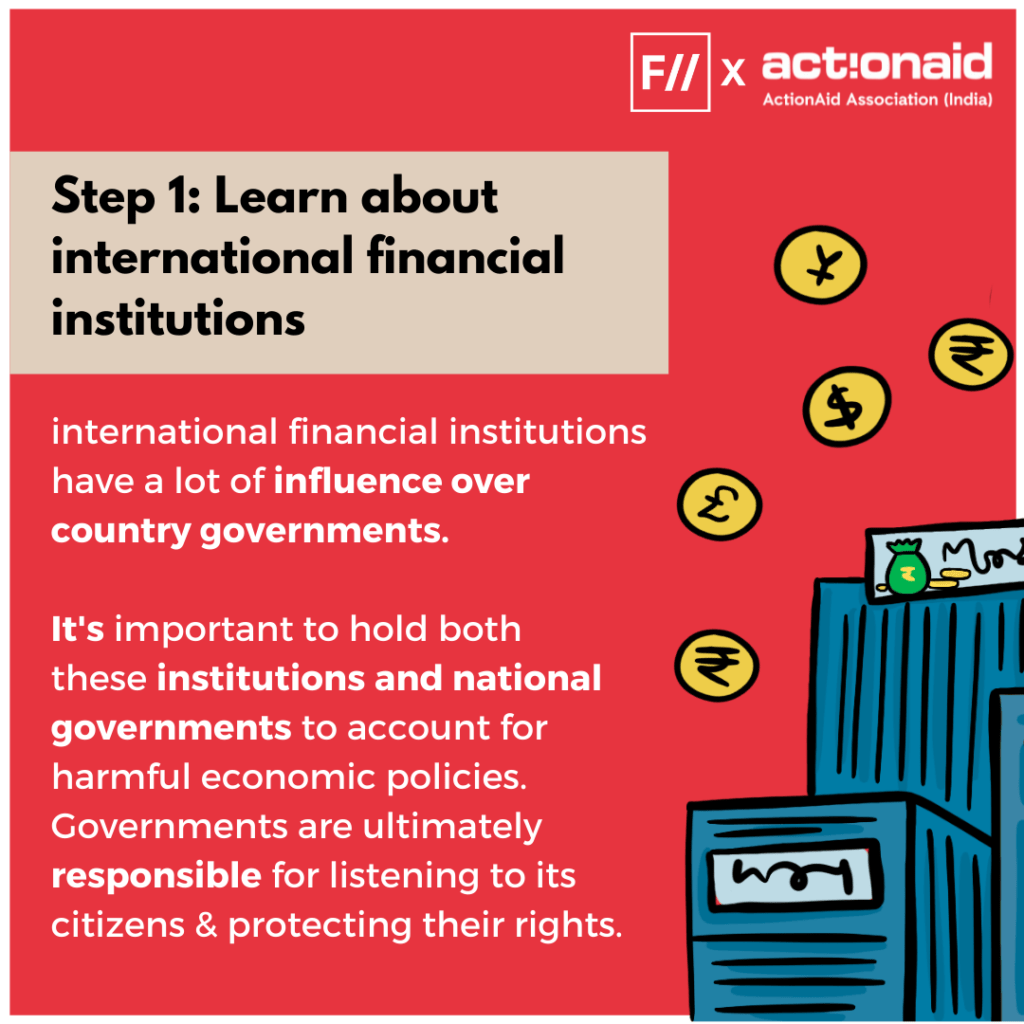Why is collective citizen action particularly important for young women to have a say in their lives and in their communities? Today, FII and ActionAid India, as part of our campaign ‘Linking the Global to the Local’, take a look at how collective action can lead to change, and much more!
Creating change
Creating change is a complex process and takes hard work and a lot of time. Collective citizen action is particularly important for young women to have a say in their lives and in their communities. It is a great way to try to overcome barriers that individual young women may face in accessing decision and policymakers.

Step 1: Learn about international financial institutions
As we have seen, international financial institutions have a lot of influence over governments. This is why it is important to hold both the IMF and national governments to account for harmful economic policies. Governments are ultimately responsible for listening to its citizens and protecting their rights.

Also read: Ab Meri Baari: A Road To An Inclusive, Youth Driven Action In Policy-Making
Step 2: Understand the local impacts of (inter)national economic policies
Identify a problem: through a focus group discussion on public services.
Gather evidence: by understanding, documenting and reporting on key community issues.
Identify the causes and the solutions: Uncover root causes and identify who is responsible for making change happen.

Step 3: Set a goal and plan activities to help reach it
Setting a goal, for example, improving access to clean water for women in a certain community, would involve a plan, which, for this particular example, can include a whole range of activities, including more research, community workshops, collective action and meetings with government representatives.

Step 4: Build solidarity
When advocating for change, it is important to build solidarity with other groups and those interested in the issue or experiencing the same or similar challenges. Building a network of people who might already be interested in the issue, working with activist groups and using social media are some ways solidarity can be built around an issue.

Also read: Building Transnational Solidarities: How Can Local Feminists Get Involved In Global Politics?
Step 5: Mobilise
Once a goal has been identified and a network of like-minded people has been established, the next step would be to mobilise! Mobilisation can take many forms: collective action in and with the community, speaking with local or national government representatives, or even with the international financial institutions directly!

Step 6: Review and reflect
While advocating for change is important, it is just as important to review and reflect on your efforts at regular intervals – to assess and celebrate your progress, to check in with one another and share experiences on key challenges and how you may overcome them, to reassess your goals, and gather energy for the next issue that may be affecting your community.

This poster series is part of FII and ActionAid India‘s joint digital media campaign ‘Linking the Global to The Local’. Throughout this collaboration, FII and ActionAid India will be focusing on how international financial institutions impact public services and young women’s rights and how we can create change
If you’re a woman or belong to a gender-minority and want to share with us how Gender Responsive Public Services (GRPS) have impacted you and your community members, we encourage you to share your experiences with us. Be vigilant and tell us what you see, hear and experience at info.india@actionaid.org.
About the author(s)
Feminism In India is an award-winning digital intersectional feminist media organisation to learn, educate and develop a feminist sensibility and unravel the F-word among the youth in India.




